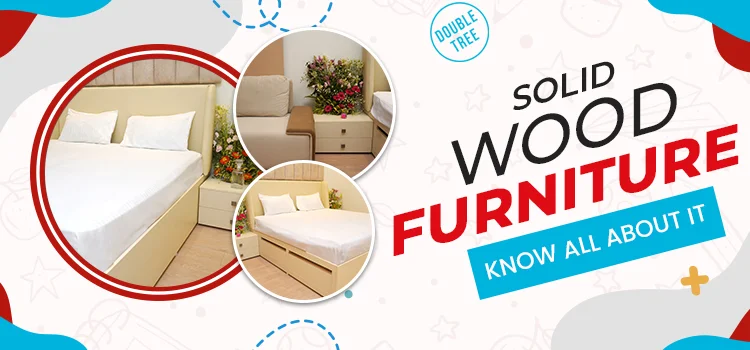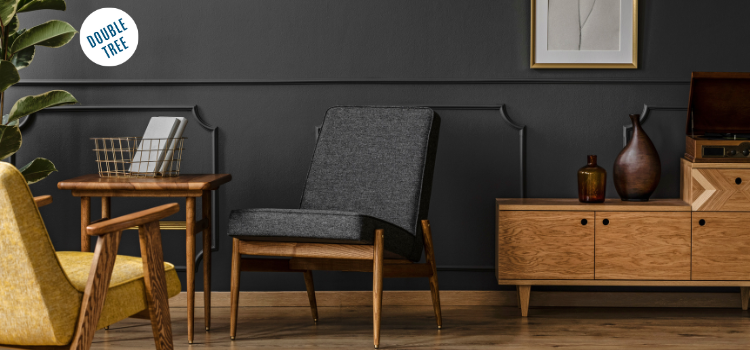Solid wood furnitures has always been a popular choice among homeowners due to its timeless appeal, durability, and versatility. It’s made from solid pieces of wood and is a great investment that can last for generations.
In this article, we’ll delve into the different types of wood used in the plywood industry for solid wood furnitures, their benefits, drawbacks, and the future of solid wood furniture.
Types of Wood Used for Solid Wood Furnitures
- Oak: Oak is a popular choice for solid wood furniture due to its durability and strength. It’s known for its attractive grain patterns and is available in red and white varieties.
- Mahogany: Mahogany is a tropical hardwood that’s often used for high-end furniture. It’s known for its rich, dark color and attractive grain patterns.
- Maple: Maple is a hard, durable wood that’s often used for contemporary furniture. It’s available in different colors, from light to dark, and is known for its attractive grain patterns.
- Cherry: Cherry is a popular choice for furniture due to its rich, warm color and attractive grain patterns. It’s a softer wood that’s prone to scratches and dents.
- Walnut: Walnut is a durable hardwood that’s known for its rich, dark color and attractive grain patterns. It’s often used for high-end furniture.
- Sagwaan wood: Sagwaan wood also known as rubber wood or para wood, is a popular choice for solid wood furniture due to its durability, attractive grain patterns, and sustainability. One of the main benefits of using Sagwaan wood for solid wood furniture is its durability. It is a dense, heavy wood that resists scratches, dents, and other types of damage.
This makes it ideal for high-traffic areas of the home such as dining rooms, living rooms, and bedrooms. Another advantage of Sagwaan wood is its attractive grain patterns. The wood has a light, creamy color that is complemented by distinctive patterns of swirls and knots. This gives it a unique, natural look that can enhance the aesthetic of any room. Sagwaan wood is also a sustainable choice for solid wood furniture.
High quality measures taken at factories to produce high quality wood
To ensure the production of high-quality solid wood furnitures, manufacturers take several measures at their factories to ensure that the wood is of the highest quality. Here are some of the high-quality measures taken at factories:
- Selective Harvesting: High-quality solid wood furniture starts with the selection of high-quality wood. Manufacturers use selective harvesting techniques to ensure that only the best trees are chosen for furniture production. This helps to ensure that the wood is of the highest quality and has fewer defects.
- Proper Drying: Properly drying the wood is an important step in the manufacturing process. Manufacturers use kiln drying techniques to dry the wood to the appropriate moisture content. This helps to prevent the wood from warping or cracking after it’s been made into furniture.
- Quality Control: Manufacturers have a team of quality control experts who inspect the wood at every stage of production. We ensure that the wood is of the highest quality and free from defects such as knots, cracks, and insect damage.
- Precision Cutting: Cutting the wood to the correct size and shape is critical to the production of high-quality solid wood furniture. Manufacturers use precision cutting techniques to ensure that the wood is cut accurately and to the appropriate size and shape.
- Sanding and Finishing: After the wood has been cut and assembled into furniture, it’s sanded and finished to create a smooth and durable surface. Manufacturers use high-quality sanding machines and finishes to create a perfect finish that’s both beautiful and long-lasting.
Benefits of Solid Wood Furnitures
Solid wood furniture is a popular choice for homeowners and furniture makers alike due to its many benefits. We are listing down some of the prominent benefits of solid wood furnitures.
- Durability: Solid wood furniture is known for its durability and longevity. When properly cared for, it can last for generations, making it a great investment.
- Beauty: Solid wood furniture has a natural beauty that cannot be replicated by synthetic materials. The natural variations in wood grain and color give each piece of furniture a unique character and charm.
- Versatility: Solid wood furniture can be crafted into a wide range of styles, from traditional to modern, making it a versatile choice for any home decor.
- Sustainability: Choosing solid wood furniture can be a sustainable choice, as wood is a renewable resource. Additionally, many manufacturers use sustainable forestry practices and source wood from responsibly managed forests.
- Easy to Repair: Solid wood furniture is easy to repair if it gets scratched, dented, or otherwise damaged. It can often be sanded and refinished to restore its original beauty.
- Value: While solid wood furniture may be more expensive upfront than furniture made from synthetic materials, it can be a better value in the long run due to its durability and longevity.
Downside of Solid Wood Furnitures
- Cost: Solid wood furniture can be expensive, especially if it’s made from high-end woods like mahogany or walnut.
- Prone to Scratches: Solid wood furniture is prone to scratches and dents, which can be a drawback for some homeowners.
- Heavy: Solid wood furniture can be heavy, which can make it difficult to move around.
The Future of Solid Wood Furnitures
The future of solid wood furnitures looks promising as the demand for sustainable, high-quality furniture continues to grow. Consumers are becoming more aware of the impact their purchasing decisions have on the environment and are seeking out furniture made from renewable resources.
One trend in the solid wood furniture industry is the use of reclaimed wood. Using reclaimed wood is a sustainable practice that reduces waste and gives new life to materials that might otherwise be discarded.
Another trend is the use of technology in the manufacturing process. Computer-aided design and manufacturing (CAD/CAM) is becoming more prevalent, allowing for more precise cuts and more efficient use of materials.
This technology also allows for greater customization, as furniture makers can create pieces tailored to their customers’ specific needs and preferences.
As the demand for sustainable and eco-friendly products continues to grow, the solid wood furniture industry is poised to thrive. With its durability, beauty, and versatility, solid wood furniture is a timeless and classic choice for any home. As furniture makers continue to innovate and incorporate new materials and technology into their processes, the future of solid wood furniture looks bright.
Tips for caring for your solid wood furnitures
Solid wood furniture is a beautiful and durable addition to any home, but it does require proper care and maintenance to ensure its longevity and beauty. Let’s discuss some essential tips for caring for your solid wood furnitures.
- Dust Regularly: Dust can accumulate on solid wood furniture and cause scratches or damage over time. Regularly dust your furniture with a soft cloth to keep it looking its best.
- Avoid Water: Water can damage solid wood furniture, so avoid using water to clean it. If you must clean it, use a slightly damp cloth and immediately dry it with a dry cloth.
- Use Mild Cleaners: Harsh cleaners can damage solid wood furniture, so use mild cleaners instead. Avoid using bleach or ammonia-based cleaners and instead use a gentle, wood-specific cleaner.
- Protect from Heat and Sunlight: Direct sunlight and heat can cause solid wood furniture to fade or crack over time. Keep your furniture away from direct sunlight and heat sources such as radiators or fireplaces.
- Avoid Scratches: Solid wood furniture can be prone to scratches, so take steps to avoid them. Use coasters, tablecloths, or placemats to protect the surface of your furniture from scratches.
- Polish Occasionally: To keep your solid wood furniture looking shiny and new, polish it occasionally with a wood-specific polish. Be sure to follow the manufacturer’s instructions and avoid over-polishing, which can cause a buildup of wax or oil.
- Repair Damage Promptly: If your solid wood furniture does get damaged, repair it promptly to prevent further damage. Cracks, scratches, or chips can often be repaired with wood filler, but larger damage may require professional repair.
Conclusion
In conclusion, solid wood furnitures is a beautiful, durable, and versatile addition to any home. From the variety of woods used in the plywood industry to the high-quality measures taken at factories to provide the best possible materials, solid wood furniture is a great investment that can last for generations.
However, it does require proper care and maintenance to keep it looking its best. By following the tips outlined in this blog post, you can ensure that your solid wood furniture stays beautiful and functional for many years to come. Whether you’re looking to invest in a solid wood dining table, a bed frame, or a bookshelf, you can trust that solid wood furniture will always be a timeless and classic choice for your home.
Also Read:- Cost-effective ways to upgrade your modular kitchen




